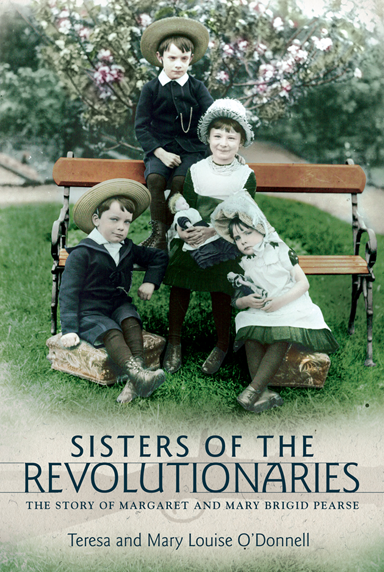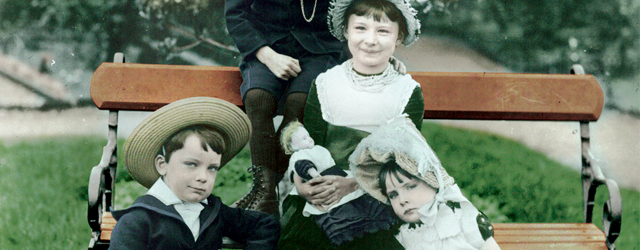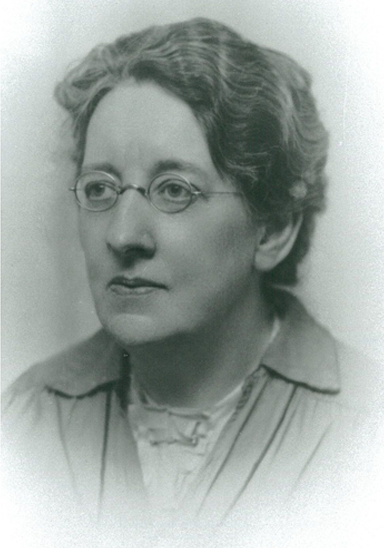Reviewed by Msgr. Francis A. Carbine
The story of Margaret and Mary Brigid Pearse has been eclipsed by that of their brothers, Patrick and William Pearse. Both men were executed in May, 1916, for their role in the Easter Rising.
The brothers were shot in the Stonebreakers’ Yard, Kilmainham Gaol, and buried in lime in a mass grave, Arbour Hill, Dublin. Mary Brigid died in 1947; Margaret, in 1968.
The parents of the four Pearse children were James and Margaret Brady who had married in 1877. The family was Catholic and lived in Dublin. Family pets were Minnie the cat and Gyp the dog.

“Sisters of the Revolutionaries : The Story of Margaret and Mary Brigid Pearse” By Teresa and Mary Louise O’Donnell, Merrion Press, Ireland, 2017.
“Our pleasures were simple and cultural” wrote Margaret. Social gatherings took place in their home with music, dancing and storytelling. Their father spoke about Irish legendary and political heroes, the 1798 Rebellion, Catholic Emancipation and Home Rule.
Patrick Pearse (born 1879), educated as a lawyer, preferred education to practice of law. In 1908, after exploring pedagogy in Belgium, he opened St. Enda’s School, Dublin. He advocated “educational Home Rule for Ireland.”
St. Enda’s – named after a 5th century Warrior King — was a bi-lingual school for boys. The curriculum included Old Irish and Archeology. On display were paintings by Jack B. Yeats and others. Guest speakers were the likes of Roger Casement, patriot executed in 1918, and W. B. Yeats.
Patrick Pearse only gradually became a militant Nationalist. He joined the Irish Republican Brotherhood in 1914, and admired Clan Na Gael, an American support group.
St. Enda’s was used for target practice and storage of weapons. Beginning in 1915, the Revolution was planned here.
St. Ita’s School for Girls – named after a 5th century saint –was founded in 1910, and directed by Margaret Pearse [born 1881]. The school provided intellectual and cultural education.
Both schools fostered pat-riotism. Sixteen alumni of St. Enda’s and two employees took part in the Rising. This event was described by Margaret as “tragic but glorious.”
After the death of her sons, Mrs. Margaret Pearse became a national figurehead. She visited Irishmen held in English prisons, and spoke at rallies. She sided with her daughter Margaret to advocate an “united and autonomous thirty-two county Republic.”
This mother became an icon of Irish womanhood. Her request for the bodies of her two sons had been denied by British authorities. Her funeral procession in 1932 consisted of 15,000 mourners.
William James Pearse [born 1881] belonged to the Gaelic League, was involved with St. Enda’s School, and was active in the General Post Office during the Rising.
Mary Brigid Pearse [born 1884] was sickly as a child and remained so as an adult. She did not share her siblings’ commitment to Republican fervor and Irish independence.
It is reported that during the Easter Rising she visited the General Post Office and told her brother, “Come home, Pat, and leave this foolishness.”
Topics such as partition of Ireland, traditional music and dance, and promotion of the Irish language were of keen interest to her siblings – but not to her! “Sacrifice and selflessness” on behalf of Ireland were far from her concerns.
Mary Bridget was a musician and author. She taught composition, harp and violin. She authored dramatic adaptations of “Uncle Tom’s Cabin” and novels by Dickins.
She also prepared radio dramas on life of St. Patrick and Brian Boru. She authored children’s stories dealing with Curly-the-Tail-Wagger and Fluff the Cat. One chapter from “Curly” is included in “Sisters of the Revolutionaries.”
In 1926, Mary Bridget published a series of magazine articles, “Home Life of Patrick Pearse.” This remains an important source for scholars.
The two sisters had a disputatious relationship centering on politics and the inheritance left by their mother.
St. Enda’s School, vandalized during the Black and Tan War in 1921, closed in 1935. It was subsequently used as a hospital for Irish soldiers during World War II. St. Ita’s had closed in 1914.
With Margaret’s death in 1968, the school was bequeathed to the Irish nation. Eamon de Valera accepted the bequest.
Margaret and Brigid Mary Pearse illustrate the divisions and tensions within Ireland centering on 1916. The sisters rest together in Glasnevin Cemetery, Dublin.



